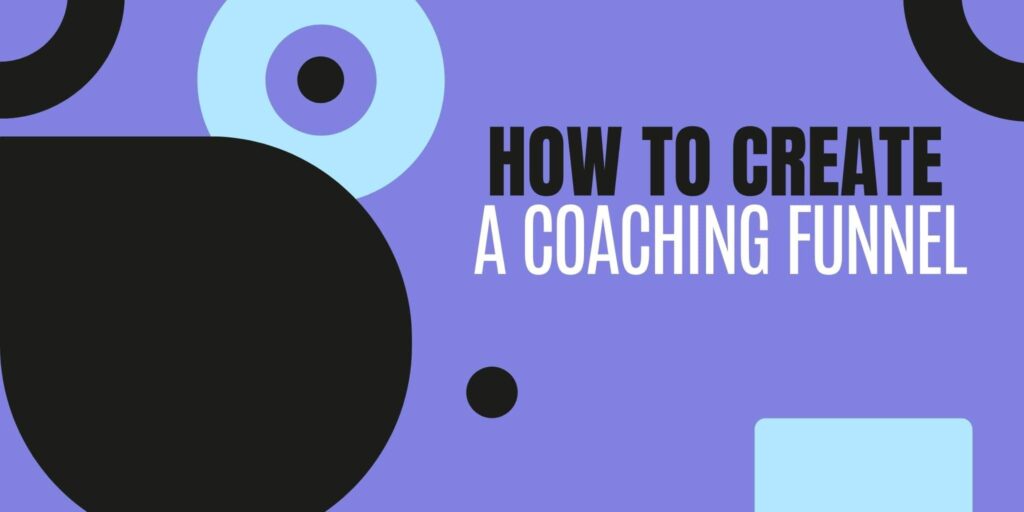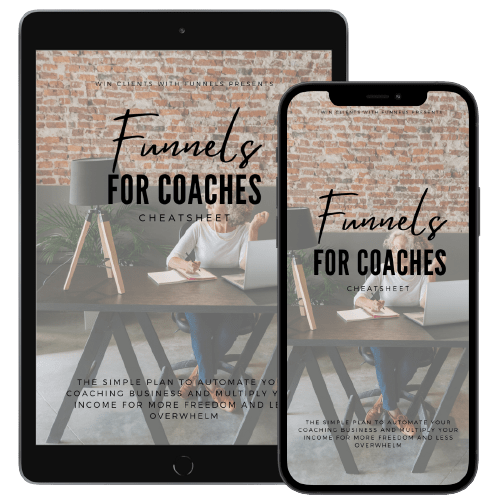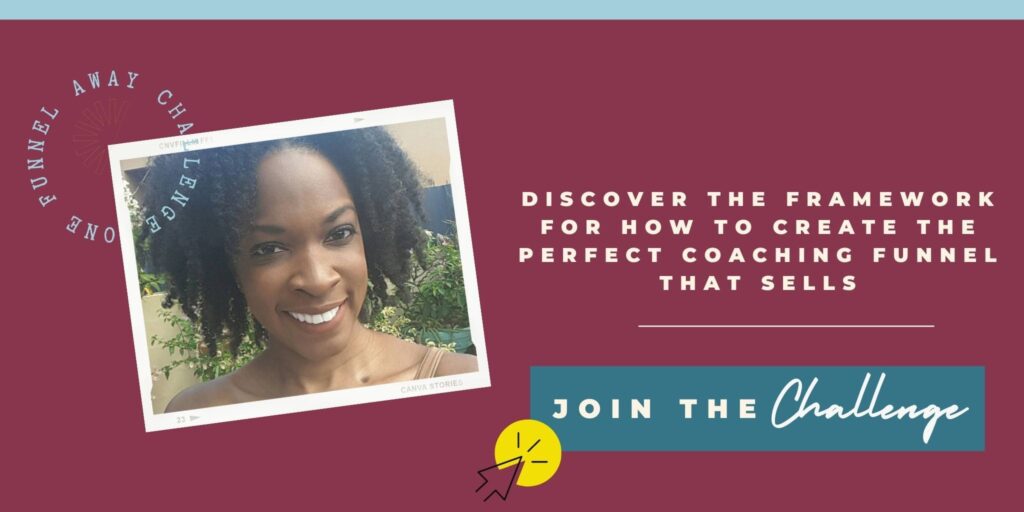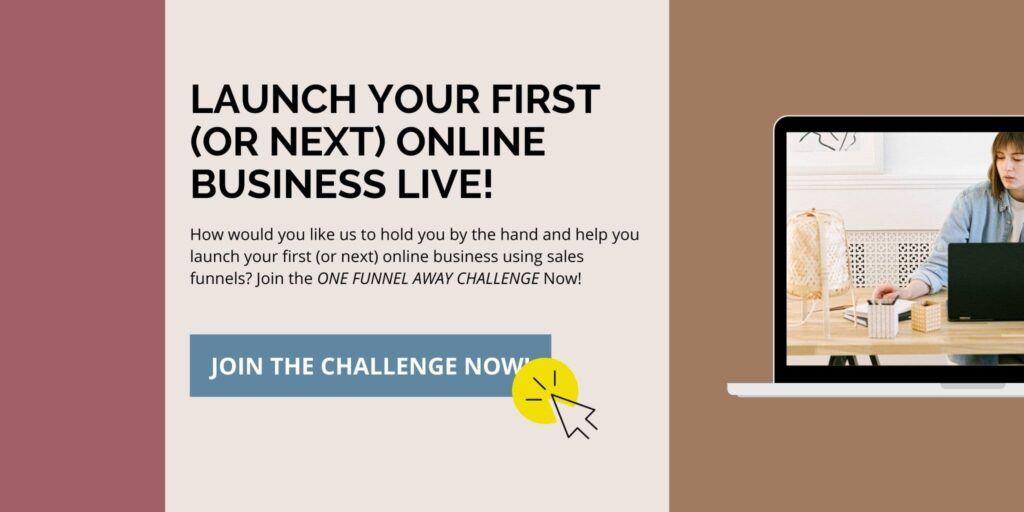How To Create A Coaching Funnel

By DAWN-MARIE NESBITT

Running a coaching business looks incredible when you’re looking in from the outside. And it is! The coaching business comes up to a whopping 11.6 billion dollars. It’s also increased by 1.2% every year on average, in part thanks to well-designed coaching funnels.
How to create a coaching funnel? To create a coaching funnel, you first need to decide on the purpose of the funnel. That could, for example, be lead generation or sales. You’ll also need tools, such as a CRM (client relation management) system and scheduling software, if your intention is to attract prospective coaching clients to sell your services to. Next, plan the six stages of your coaching funnel: awareness, interest, evaluation, intent, purchase, and retention. Finally, you should maximise your conversions by developing an understanding of your clients’ mindset so you can be relatable.
As you can see, these aspects can be challenging to master for the greatest of coaches. If your coaching funnel is not sufficiently optimised, your audience can vary considerably every month. That instability is daunting for the best of us coaches.
So what can you do about it?
Most successful coaches do pull themselves out of this phase by using targeted and effective sales funnels to attract an influx of new clients, hence making their income sustainable.
In this article, I’ll cover all the questions you may have:
- Why are coaching funnels so important?
- How do I build my first coaching funnel?
- What do I need for my coaching funnel?
Let me help you customise your first coaching funnel and optimise your revenue stream.
What is a Coaching Funnel?
Simply put, a coaching funnel will attract your prospective clients and weed out uninterested people. The number of people in the coaching funnel will reduce, as they go through the funnel, until you have a smaller group of ideal clients, bringing in that sustainable income I spoke about earlier.
An effective coaching funnel won’t be pushy but will serve to inform potential clients about you and your work.
With coaching funnels, think about making your coaching front and center of every marketing tool. After all, you’re not selling a product. You’re selling your expertise to people who need it.
The best technique for you is using marketing techniques to showcase your coaching skills just enough to make your audience buy your service.
Finding the balance between actively showing your skills and advertising the benefits of buying your service is the key to building a successful coaching funnel.
The format of a coaching funnel uses the core content of your service to make a map that drives maximum traffic to your website, ensures that all potential leads enter the funnel, and translates to the highest conversion rate possible.
Different Types of Coaching Funnels
Now that you know the basics, let’s talk about setting up your coaching funnel and the types of funnels that you can consider to include in your marketing.
Lead Generation Funnel
The basis of any sales funnel starts with lead generation, which requires your best content to get people clicking their way to your landing page.
Add a sales funnel into the mix, and you’ll start making money! Once you’ve got people interested, tastefully begin talking about your coaching program to make them aware of what they can gain from your expertise. Use value-packed emails, videos, webinars, and throw some freebies into the mix to give prospective clients an idea about your service.
Low-Priced Product Funnel
Let’s get real: ad campaigns cost money. And if you’re just starting, every single penny counts. Add a low-priced product funnel to your strategy and sell a smaller product as a teaser trailer for your leading coaching program. That’ll help you engage clients, making it easier to retain them for high ticket products, and it’ll fund your ad campaign.
How does it fund your ad campaign? Think about it this way. If you’re using paid advertising to attract prospects to your funnel and they purchase your low-priced offer, the money you earn from the front end offer, will write off the money you spend to acquire those sales.
Of course, you may not be profitable at the front end, but it’s your core coaching program that you sell on the back end, that will help you smash your profits.
Automated Webinar Sales Funnel
Use dedicated software, like Clickfunnels or WebinarJam, to automate your webinar, giving new leads an immersive experience with a one-time investment.
You can make an automated webinar engaging by a recorded activity, building up questions and answering them to give that epiphany moment!
High-Ticket Sales Funnel
Bring all your resources into play for a high-ticket sales funnel. Use an attractive landing page, an opt-in page, and a value-packed email sequence that leads to a conversation with your prospective client.
Remember that high-ticket sales require a lot of nurturing and compelling proof to convince your prospect to invest in your coaching program.
So this isn’t a funnel that you should “wing”. If you’re not sure how to increase the impact of your high-ticket sales funnel, I can help you come up with a marketing strategy tailored to your unique needs. Click here to see how I can help.
How to Make a Successful Coaching Funnel
Making your coaching funnel a successful marketing technique needs excellent communication skills.
Be upfront about your program because the average user has a low attention span and only lingers on your site for a short period before they abandon it. Being direct will let prospective clients know what you’re selling and why they should buy it.
Next, you need to follow up with every potential lead. Nurtured leads show vastly better conversion rates which are essential to keep your business running.
Lastly, you need to be persistent. Rejection is a part of sales. Don’t give up on a lead until you’re 100% sure they won’t buy your service. And you’ll be 100% sure they won’t buy your service when they say no, or they unsubscribe from your email list.
Tools to Build Your First Coaching Funnel
Here I discuss some essential tools to get you started with your first coaching funnel:
Manage Your Relation With Clients Efficiently
You need to understand your client’s mindset. That’s known as Client Relationship Management (CRM), which helps you optimize your relationship with the consumer and generate more sales. I suggest you use software like Satori to get started.
The first thing you’ll want to do is figure out who wants to buy your coaching program. Use email tracking services within your CRM or email autoresponder like Aweber, to help you do that. They can help you figure out which receivers clicked on your email, so you’ll know which leads to segment and nurture further.
Great content is the core of your coaching funnel. Since prospective clients tend to receive several marketing emails a day, you need to make sure your content stands out. Use targeted, impactful language that puts your coaching skills on display.
Keeping Things on Track and Time
Once you’ve made some sales, you’ll realize that scheduling can be a downright hassle. To make this part easier, find suitable scheduling software like Calendly or Acuity Scheduling, that’ll sync your calendar to your clients.
That’ll help everyone be on time for any coaching or consulting calls and provide a smooth coaching experience that keeps the clients coming back.
The Stages of a Coaching Funnel
Awareness
Every excellent service needs an advertising campaign covering all bases (social media, well-known coaching blogs, emails) and matches up.
If you’re not sure how to effectively tackle each platform, I would love to talk to you and help you figure out the best marketing strategy. Click here to see how I’ve helped other coaches.
Interest
As a result of effective awareness, stage leads show interest by asking for more information. They’ll visit your website and click on your emails repeatedly to go over your service.
That’s where you need to start following up to make sure they know your unique selling points and why you’re the best coach in town.
A few case studies will help your lead visualize your own success and make a strong impact.
Evaluation
Leads will start comparing you to competing businesses to evaluate your services. Here again, it’s essential to reiterate why your coaching services are better than your competitors.
Talk about the features and benefits included in your service, personal anecdotes, and success stories to drive your point home.
Intent
From freebies and webinars to subscription lists, clients who consistently appear on your radar usually try to figure out if you live up to their expectations.
So you must provide them with top-notch content at every step to keep their interest. Keep interacting to eliminate any doubts.
Purchase
Once they decide that your service is worth the investment, clients will make a purchase. But the story doesn’t stop here!
Retention
Client retention is one of the easiest ways to build a sustainable income.
Use automated software to communicate with clients, solicit feedback, and communicate your coaching offers. It’ll let you gather crucial data to improve your business and make people feel like they are a part of your community.
It’ll also help you stay in contact with clients, ensuring that you have a devoted clientele when you introduce new high-ticket offers.
How to Develop Great Conversion Rates
Conversion rates depend mainly on the quality of your content. Let’s talk about the tips you can incorporate:
Get in Your Ideal Client’s Mindset
Knowing your ideal client will help you build trust and a sustainable connection. Identifying who your coaching business is targeting and finding those people will help you focus your marketing techniques by increasing your reliability and making your prospective client curious.
Platforms like AYTM or Survey Monkey are great for researching and interacting with your market. They allow you to close in on your core demographic and improve your client experience. Don’t forget to reward clients who complete the survey!
Become Relatable
Make your service relatable by real-time stories of past clients. Talking about your past client’s journeys and successes can convince leads that your coaching programs will help them achieve their dreams.
Talk About Yourself
I have personally experienced how your success story can genuinely inspire potential leads. The more they believe in you, the better your chances are of making a sale.
I suggest you summarise your triumphs using appealing wins and results and add pictures of yourself and your team to allow clients to connect with your business on a more human level.
Wrapping Up
Great content, communication, and organisation will help you set up a coaching funnel that’ll broaden your horizons and significantly increase your clientele.
I understand that the sheer amount of marketing information you see when starting can be challenging. That’s why I’m here to help you make the right decisions for your coaching business.
Don’t know where to start?
The One Funnel Away 30 Day Challenge helps you get the coaching business and funnel-building results you want without the headache of trying to figure out everything on your own.
Does fast results sound good to you?
This Challenge is designed to help you get more leads, clients, exposure and sales.
So if you’re looking to accelerate your business growth online and get personal, hands-on training to create your first (or next) online coaching webinar funnel, register for the New One Funnel Away Challenge here.

Funnels For Coaches Cheatsheet
The Simple Plan To Go From 1:1 Coaching To Scaling Your Business With Digital Products + Funnels So You Can Serve More People, Make A Greater Impact And Multiply Your Income.

